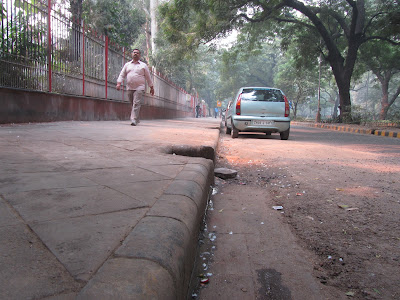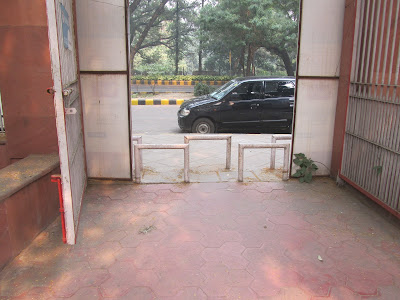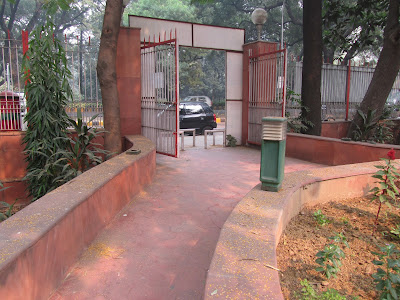Dear Friends,
Please refer to my earlier post - Post offices in Delhi are inaccessible but Department claims otherwise, incorporating media coverage on pathetic situation prevailing in the Post Offices of Delhi and the awareness level of the senior officials of the Department of Post on the Accessibility.
I had a reality check of accessibility status of the post office at Jor Bagh in the NDMC area which claims to be better off then most MCD controlled areas when it comes to accessibility in the public infrastructure.
The reality check /access audit photos speak for themselves here:
When the reality check at the prominent areas under NDMC is so alarming what do we expect of the other post offices in Delhi, especially the ones in the areas served by MCD where the civil amenities are even more pathetic. This is in gross violation of the prevalent norms of barrier free environment.
Another reality check coming week in an area served by MCD !
regards
SC Vashishth
Please refer to my earlier post - Post offices in Delhi are inaccessible but Department claims otherwise, incorporating media coverage on pathetic situation prevailing in the Post Offices of Delhi and the awareness level of the senior officials of the Department of Post on the Accessibility.
I had a reality check of accessibility status of the post office at Jor Bagh in the NDMC area which claims to be better off then most MCD controlled areas when it comes to accessibility in the public infrastructure.
The reality check /access audit photos speak for themselves here:
 |
| This Lodi Road Post Office is in a posh colony of South Delhi under the New Delhi Municipal Council. |
 |
| This protruding counter of this eatery on the pedestrian pathway leading to the post office blocks the pedestrian movement |
 |
| The pedestrian pathway leading to the Post Office doesn't have a kerb ramp or kerb cut. |
 |
| Ramp ends with a thud without and tactile indication. The ramp edge is a trip hazard on both ends. |
 |
| Similarly the other side of the ramp has no handrails and ends with an threshold which is a trip hazard. |
 |
| Entrance 1 is stepped and granite has been used in the post office which makes it slippery and inaccessible to the visitors with disabilities. |
 |
| Entrance 2 is also stepped with a similar pattern. The counter height on both sides is inaccessible to those with disabilities and caters to only standing persons. |
Another reality check coming week in an area served by MCD !
regards
SC Vashishth


